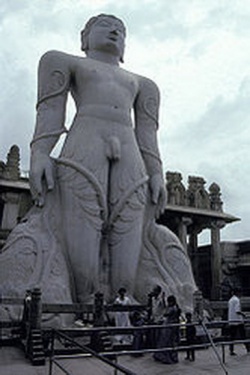Five five-hundred-year periods
five five-hundred-year periods
五箇の五百歳 (Jpn goka-no-gohyaku-sai )
Five consecutive periods following Shakyamuni's death, during which Buddhism is said to spread, prosper, and eventually decline. These five periods are described in the Great Collection Sutra and predict the course of Buddhism in the first twenty-five hundred years following Shakyamuni's death. In chronological sequence, the five five-hundred-year periods are
(1) the "age of attaining liberation," in which many people attain emancipation through practicing the Buddha's teachings;
(2) the "age of meditation," when meditation is widely practiced;
(3) the "age of reading, reciting, and listening," in which the people study and recite the sutras and hear lectures on them as their central practice;
(4) the "age of building temples and stupas," when many temples and stupas are built, but the spirit of seeking the Buddhist teachings declines; and
(5) the "age of quarrels and disputes," also known as the age of conflict, when strife occurs among the various rival schools and Shakyamuni Buddha's teachings become obscured and lost.
In terms of the three periods, the age of attaining liberation and the age of meditation correspond to the Former Day of the Law; the age of reading, reciting, and listening and the age of building temples and stupas correspond to the Middle Day of the Law; and the age of quarrels and disputes corresponds to the beginning of the Latter Day of the Law. Regarding this fifth period, Shakyamuni says in the Great Collection Sutra, "Quarrels and disputes will arise among the adherents to my teachings, and the pure Law will become obscured and lost."
